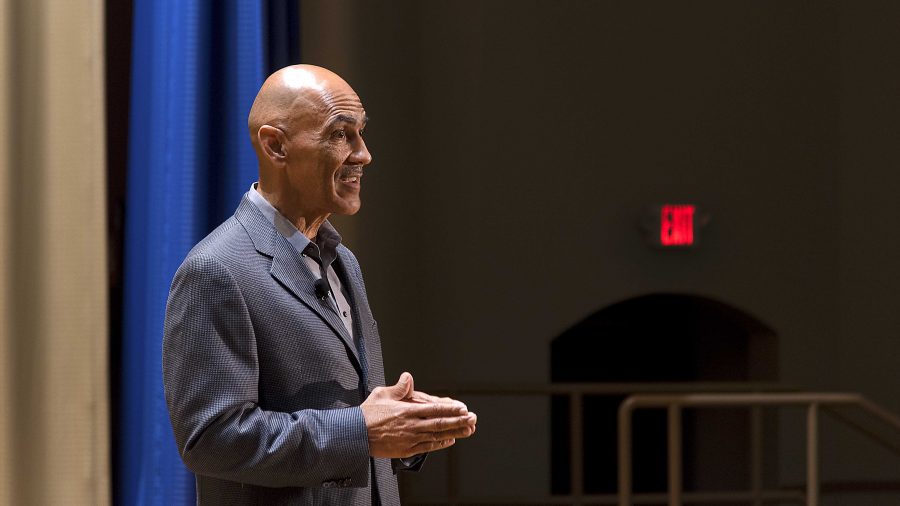Since the dawn of the 21st century, more and more people have taken strides towards acceptance, and measures have been taken in all walks of life to ensure that everyone gets their fair share. The same can be said for the National Football League (NFL). Let me introduce you to the Rooney Rule.
The Rooney Rule is an interesting requirement found within the NFL Rule Book. The “what’s a catch?” and “what’s a tackle?” rules must have been lost, but the Rooney Rule has, since its creation in 2002, reinforced the NFL’s image of equality, but not much else. According to the rule book, the Rooney Rule is a mandate that each NFL team is required to interview at least one minority candidate for each head coaching or executive position once there is a vacancy. At the conclusion of the 2018 season, the rule was updated to include minority candidates outside an organization or from the NFL’s career development advisory panel list.
The Rooney Rule was adopted by the NFL after the close of the 2002 season, spearheaded by then-Pittsburgh Steelers owner Dan Rooney who pushed its creation. The rule was put into place in response to increasing criticism of the demographics of the NFL’s “front office” positions— head coaches, general managers (GM) and team owners, as well as other miscellaneous executive positions within each NFL team. The original draft of the rule only included coaches but was expanded to include GMs and other higher-level positions.
Criticism hit its peak when, following the 2001 season, Tony Dungy and Dennis Green, black head coaches of the Tampa Bay Buccaneers and Minnesota Vikings, respectively, were fired in the same off-season— actions that were met with heavy criticism by football media.
Dungy, a two-time NFL Champion, had just finished a 9-7 season, and while he didn’t advance past the Wild Card round of the 2001 playoffs, was (and still is) the only Buccaneers coach to be fired after a winning season. Green was axed after a 5-11 campaign, his first losing season in over a decade. In a vacuum, neither of these coaches should have been fired, but why they did was a prime reason behind the adoption of the Rooney Rule.
Was it necessary? Was the Rooney Rule a response to institutional discrimination in America’s biggest reality show, or was it a short-term response to a few grumbling teams? To analyze the necessity of this rule, one must look at the raw data behind the hirings and firings of front office staff since 2003 when the rule was put into place.
A lot of a coaches’ work can be determined by metrics surrounding team performance under that particular coach’s tenure. Winning percentage, plus/minus totals and overall success can be attributed to many things. The New England Patriots have built a dynasty through sheer force of will, while the Cleveland Browns went 1-31 in two seasons with a plethora of first-round draft picks on their roster. To understand whether or not a coach was hired/fired based on race is a coupling of the circumstances surrounding the hire and the coach’s success— or failure— with that newfound job title.
Since the adoption of the rule, there has been a growing polarity in minority NFL coach performances. Eight of the 21 teams that have posted a “winning season”— a winning percentage over .500— were lead by a minority head coach, and five of the 21 teams that posted a record below .250 had a minority coach at the helm. These can go as high as Anthony Lynn, who sits at a .656 winning percentage and Hue Jackson, the unfortunate captain of that Cleveland Titanic for all 31 losses who sits at .088. His 11-44-1 record sits just one spot out of last place, a spot occupied by Cam Cameron who won a whole one game in his lone season with the Miami Dolphins.
The revisiting of the Rooney Rule has not been without reason in the past few years as well. At the end of the 2016 season, there were seven black GMs in the NFL. At the end of this past season, Chris Grier, Dolphins GM, is the only remaining black GM after the retiring of Baltimore’s Ozzie Newsome and the firing of Raiders’ Reggie McKenzie.
Whether or not the NFL has been discriminatory in its hiring practices is beyond the evidence given, but as more of a fail-safe, the Rooney Rule has ensured that the NFL will be as diverse as possible for years to come.


